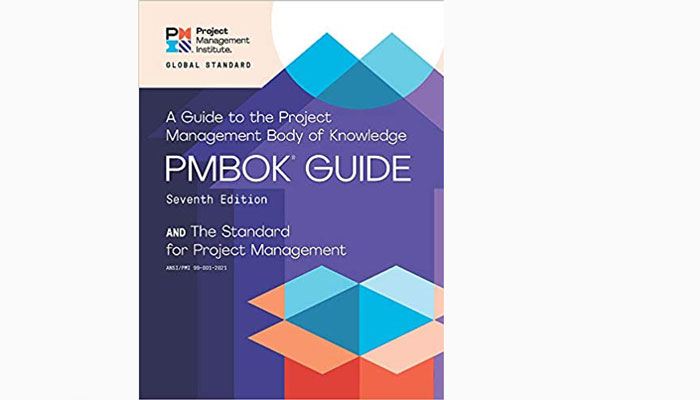
The Project Management Institute (PMI) has released the PMBOK® Guide 7th Edition (Guide to the Project Management Body of Knowledge. How does this impact your PMP® exam preparation? Let’s cover what you can expect based on PMI’s recent announcement so you can plan accordingly.
Most importantly, the PMP® Exam WILL NOT CHANGE in January 2022 due to the release of PMBOK® Guide–Seventh Edition, according to PMI. The PMP® exam will continue to be based on the current Exam Content Outline (ECO).
The PMP® exam undergoes changes as part of a of a continuous improvement process. PMBOK Guide–Sixth Edition is still relevant to the current PMP exam. Elements from PMBOK Guide 7th Edition may be incorporated as part of PMI’s continuous improvement process in the future, but the primary basis for the exam remains the current ECO.
RMC’s current materials are modeled on the existing ECO and because of this RMC is not releasing a new edition of Rita’s Exam Prep book or RMC’s exam materials. We do continuously improve our prep materials and delivery on a regular basis.
PMBOK Guide 7th Edition Changes
- PMI’s PMBOK® Guide 7th Edition Updates
- PMBOK® Guide 7th Edition and RMC’s Exam Prep Materials
- How Does PMBOK Guide 7th Edition Impact the CAPM® Exam?
- PMP Exam and Agile Methods
PMI’s PMBOK® Guide 7th Edition Updates
PMI has provided several updates that tell us what to expect with the release of the PMBOK Guide 7th edition.
July 2021:
- The PMP exam is based on the PMP® Certification Exam Content Outline (ECO), not the PMBOK® Guide or other reference books. The Exam Content Outline summarizes the research conducted to create the PMP® exam and includes the most critical tasks required for project managers to master their role.
- The current Exam Content Outline (ECO), dated January 2021, was designed to stay relevant for the foreseeable future, and PMI will give advance notice to the public before a new ECO and corresponding exam are launched.
- PMBOK Guide 7th Edition will now be a reference to inform the development of the exam items. However, before any validated exam item is added to the exam, there is a rigorous and thorough review and field test cycle. This process takes several months.
- Key learnings and concepts from the PMBOK Guide–Sixth Edition remain valued and are referenced in sections of the guide (presumably referring to the Seventh Edition).
- The PMBOK Guide is one of numerous potential inputs into preparing for the exam – and is listed as a reference – but is not a test-preparation tool.
- The PMP exam is created based on the Exam Content Outline and uses many sources for question development.
- More details are available from the PMBOK Guide FAQs updated in July 2021.
PMBOK Guide 7th Edition and RMC’s Exam Prep Materials
With the release of the PMBOK Guide 7th Edition, PMI announced it would be used as a reference to “inform the development of exam items.” Unlike previous versions of the PMBOK Guide®, the Seventh Edition is not creating sweeping changes to the exam itself.
The earlier versions of the PMBOK Guide showed changes to best practices in the field of project management. That is not the case with PMBOK Guide 7th, which focuses more on outcomes than practices. Those earlier versions of the PMBOK Guide often involved changes in terminology and processes, requiring wholesale changes to the exam and exam preparation materials. This is no longer the case.
Now, PMI says it will be changing the exam gradually over time. This makes sense. The old way PMI made changes gave the impression that knowledge gained under the prior editions of the PMBOK Guide was no longer relevant, requiring complete changes in the way project management is done. The incremental approach is more consistent with the way project management practices change over time.
RMC’s current materials are modeled on the existing ECO and are therefore relevant to the PMP® exam as it is structured today.
How Does PMBOK Guide 7th Edition Impact the CAPM?
The Certified Associate in Project Management (CAPM)® exam will change in January 2023 although PMI has only released limited information about it. We continue to keep in touch with PMI and other sources and will update this post as new information about the CAPM® exam becomes available. According to PMI, the CAPM® will follow the PMBOK® Guide―Sixth Edition, specifically:
- The current CAPM® exam will continue to be based on the Sixth Edition as dictated by the Exam Content Outline for the CAPM examination.
- The Sixth Edition is a test preparation tool that candidates may leverage to prepare for the CAPM exam. (PMBOK Guide FAQs, Updated March 2021)
- The current CAPM® exam is based on the PMBOK® Guide – Sixth Edition. Continue using RMC’s CAPM® materials for your test preparation.
- Further information is outlined in the PMBOK Guide FAQs, Updated July 2021.
PMP and Agile Methods
Please be aware that our exam prep materials assume a basic familiarity with agile and predictive project management. But, RMC has many ways for students to build a foundation in agile methods as part of their exam prep.
RMC offers several Agile Fundamentals tools if you want to learn the basics of agile as part of your test preparation process. If you are looking for a class, consider our Agile Fundamentals Instructor-Led Virtual course. You can also purchase Rita’s PMP® Exam Prep book or system with the Agile Fundamentals book.
RMC is Here to Help You Prepare
The PMP® Exam Prep, Tenth Edition is still the premier exam preparation book in the industry. This is borne-out by pass rates and feedback we receive from our students. PM FASTrack® is still the best exam simulator in the industry. It is continuously updated with new questions, including questions relating to concepts contained in PMBOK® Guide―Seventh Edition and questions in PMI’s new question formats.
RMC’s PMP® Exam Prep System combines the power of our book, exam simulator and flashcards. Our PMP® Exam Prep, Tenth Edition audiobook provides an alternative to the printed book to improve the convenience of your exam preparation experience. RMC’s PMP® exam prep virtual instructor-led classes and eLearning course still represent some of the best ways to prepare for and pass the PMP® exam.
Contact us today if you have further questions about the PMP® exam or to explore which exam prep option is best for you.








